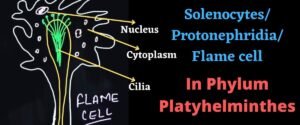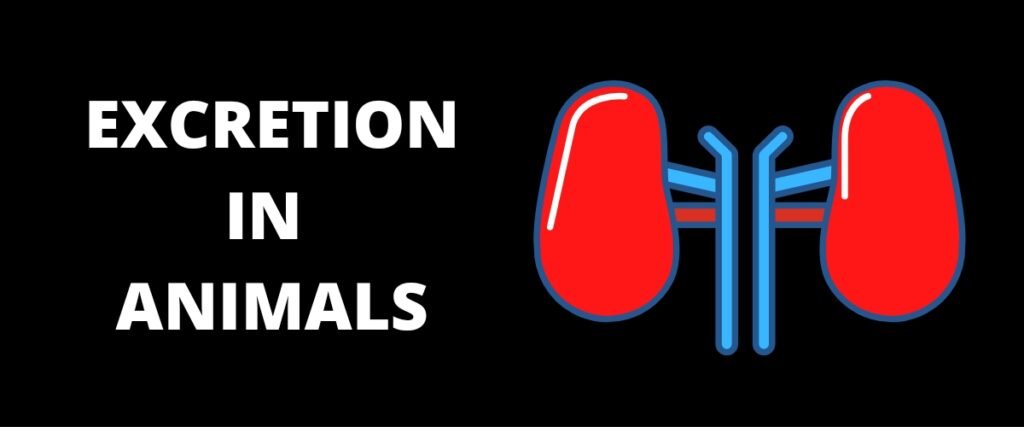Welcome to kashibiology.com
In this post we have to learn basic info about the excretory system for academic and medical competitive examination point of view.
Excretory System
The system of the body that removes harmful nitrogenous substances from the body (elimination of nitrogenous waste) is called the excretory system.
All organisms have specialized types of structures to remove nitrogenous waste substances that are formed during metabolic processes especially in protein metabolism.
For example, one pair of kidneys is present in Humans and other higher animals and functions as primary excretory organs.
Kidney is the main excretory organ and it filters out harmful nitrogenous substances from the blood.
Beside excretion kidneys play an important role in Osmoregulation. That is maintains the amount of fluids and salts inside the body.
You may also enjoy reading this post.
Our today’s post developed the understanding about the following Questions-
- What is an excretory system?
- What is the excretion?
- Types of excretory patterns.
- Ammonotelic, Ureotelic and Uricotelic Animals.
- Types of excretory waste.
- Different excretory structures in other animals.
- Dual excretion.
Definition of Excretory system
The organ system of the body that separates nitrogenous substances from the blood formed by metabolic processes in the body and at the same time maintains osmoregulation in the body is called excretory system.
The process by which harmful substances especially nitrogenous substances are removed from the body is called excretion.
Excretory waste
Excretory substances are formed by nitrogen metabolism; some of the biomolecules present in our body also contain nitrogen such as amino acids, proteins, nucleic acids and enzymes.
After protein metabolism in the liver, urea is formed, which the kidneys filter through the blood.
Types of Excretory Waste
Excretory substances can be of different types in different animals.
on the basis of excretory substances, animals are Broadly divided into three main categories.
- Ammonotelic
- Ureotelic
- Uricotelic
Pattern of Excretion
Pattern of excretion also categorized in three main types namely-
1-Ammonotelism
Animals where the excretory substance ammonia is released in metabolic processes are called Ammonotelic.
Ammonia is the most toxic nitrogen emitter and requires a lot of water for its excretion. That’s why most of the aquatic animals excrete ammonia as nitrogenous waste.
Therefore these animals are called Ammonotelic, and this process is called Ammonotelism.
For example-
Bony fishes, Aquatic amphibians (which found in water) and Insects (insects)
However in Fishes Ammonia is excreted by gills. Here there is very much significant role of kidneys in excretion.
2-Ureotelism
Such animals, where urea is formed by the metabolism of nitrogenous compound or proteins, are called ureotelic animals. Here the excretory substance is urea and the process of excreting them is called Ureotelism.
Urea is the main excretory substance in most land animals. Such as
Marine fishes, Land amphibians and all Mammals including Humans.
3-Uricotelism
Animals, in which the excretory substance is uric acid, are called Uricotelic and the process of removing these excretory substances is called Uricotelism.
Uricotelism is mostly found in animals that excrete uric acid excretory substances in the form of a paste or pellets.
Such as- in Birds, Reptiles, Terrestrial Snails and Insects.
Uric acid is the least toxic, so very little water is needed to remove it.
Some other nitrogenous excretory substances
Apart from the above excretory substances, some other nitrogenous substances are also formed such as
Aminotelic
Animals which excrete amino acids in excess are called Aminotelic.
For example, some members of phylum Mollusca (Unio).
Some of the Echinoderms members like Asterias (starfish) are also Ammonotelic in nature.
Guanotelic
Some specific Arthropods like spiders (order-Araneae) excrete guanine (a type of nitrogenous base-Purine) in excretion.
Creatinine and Creatine
Our muscle cells contain a high-energy molecule called Creatine phosphate, which stores ATP.
If the phosphate concentration is high, it is excreted in the urine as Creatine phosphate or as creatinine.
Trimethyl Amine Oxide (TMO)
Marine teleost fishes excrete very high amounts of a different type of excretory substance called Trimethyl amine oxide (TMO).
Arnithuric acid
Excreted in birds, it is formed by the combination of benzoic acid and Ornithine amino acids.
Hippuric acid
It is formed by the combination of the amino acid Benzoic acid and Glycine.
Allantoin
It is made from uric acid. It is extracted during embryonic development in amniotes.
Apart from this Bilirubin, Biliverdin and bile salts also fall under the same category of substances.
Types of Excretory Organs
Over one million species of animals are found in the Animal Kingdom.
Some animals show very simple body designing while others has complex body designing.
Hence according to the body organization the excretory organ is also varies in them.
There are also some animals in which the excretory organ is totally absent. And the excretory material is removed directly to the external environment by the cell membrane of the cell of the body.

For example there is no well defined specific excretory organs are found in the phylum Protozoans, Poriferans, Coelenterates and Ctenophores.
Here the excretory substances are removed directly by the surface of the body.
In Phylum- Platyhelminthes, Rotifers, in some Annelids and in Cephalochordates primitive types of excretory structures are present with simple organization.
Flame cells
These are the special types of cells found in the members of phylum Platyhelminthes.
Nephridia
They are tubular structure found in earthworms and other annelids.
Malpighian tubules
These are excretory structures found in insects & cockroaches.
Antennal gland
The excretory structures antennal gland or green gland is found in Lobsters or Crustaceans.
Kidneys
A pair of kidneys presents in most of the vertebrates or higher class animal.
Such as- In Reptiles, Amphibians and Mammals and Fishes, Kidneys act as a excretory organ.
However, in Fishes, the gills are excretory in functions, mainly performing the function of excretion.

Dual Excretion
Many animals according to their habitat and availability of water can change the chemistry of excretory waste.
In such type of excretory pattern where the animals perform two modes of excretion is known as dual excretion some common examples of dual excretory animals are-
Tadpole Larva-
Larva of Frog (Rana) lives when living in water excretes ammonia, but in adult frog (semi aquatic condition) excrete urea.
Crocodile (Crocodilus)-
In watery conditions crocodile excrete ammonia and outside the water, concentration of urea and uric acid increases in excretory waste.
African Toad (Xenopus) & Lung Fishes-
They normally excrete urea in aquatic habitat but during metamorphosis they move from the aquatic environment and are immobile in moist air or in muddy conditions.
Earthworm (Pheretima posthuma)-
When a sufficient amount of water is available in the surrounding environment it excrete ammonia, while scarcity of water it excrete urea.
Conclusion
According to the above description it is clear that how nature design excretory system in animals body to separate harmful nitrogenous waste from the blood or body fluid as well as Osmoregulation.
However excretory structure evolves specifically in different groups of animal kingdom and vary in morphology but performs same function that is Excretion & Osmoregulation.
If any mistakes or any suggestion from your side please mention in comments
Thanks for reading this Post.

